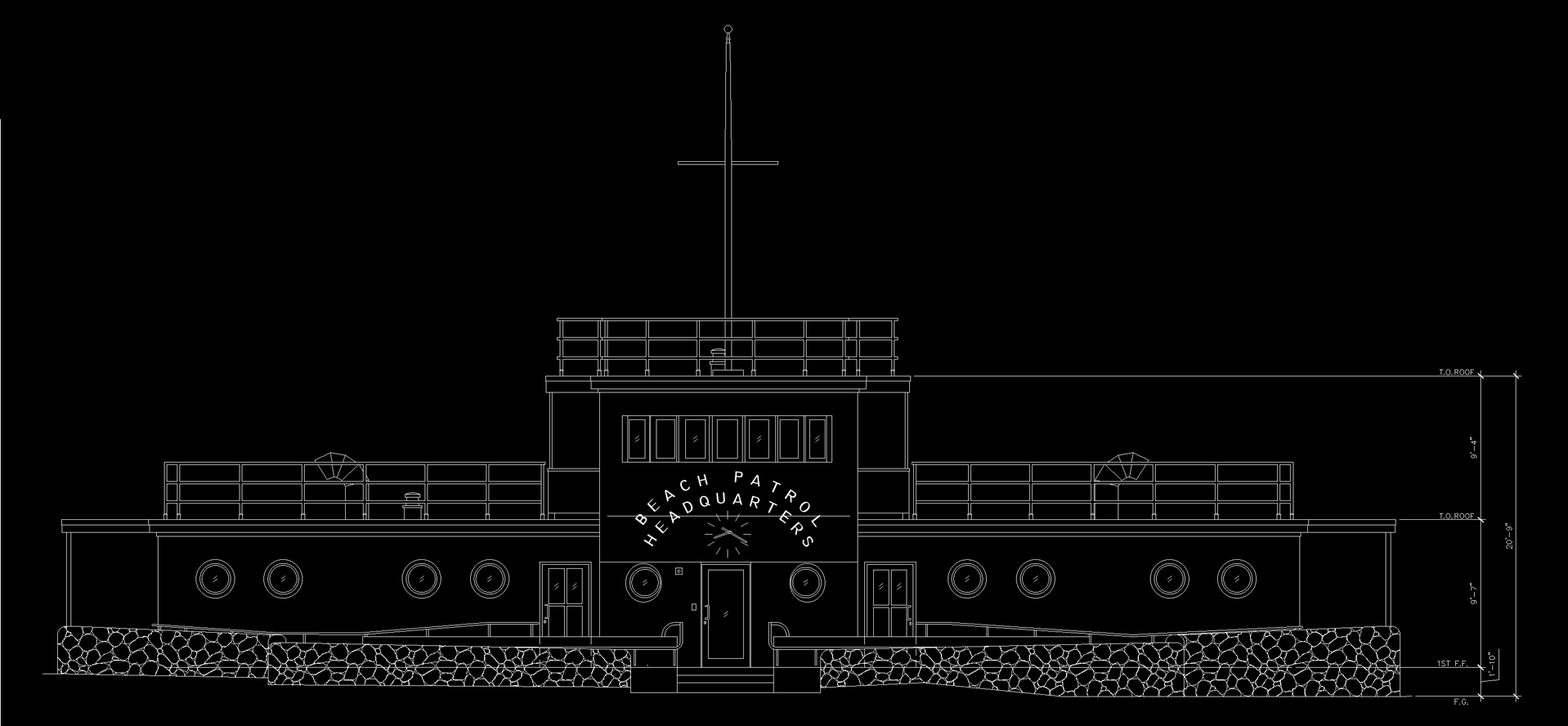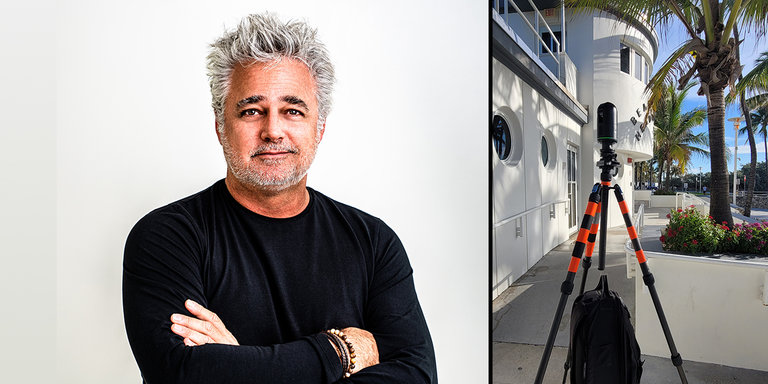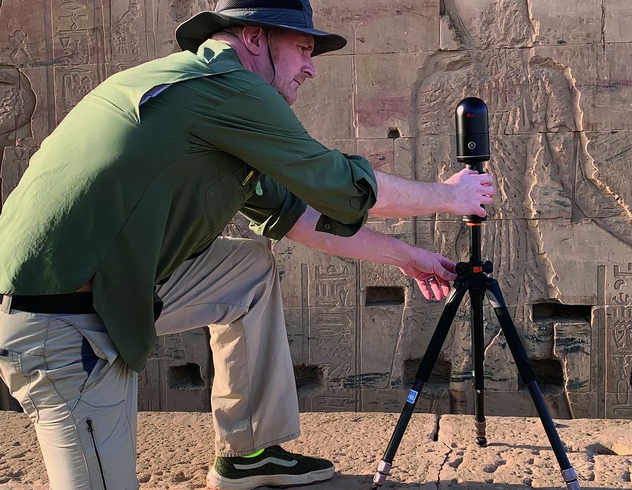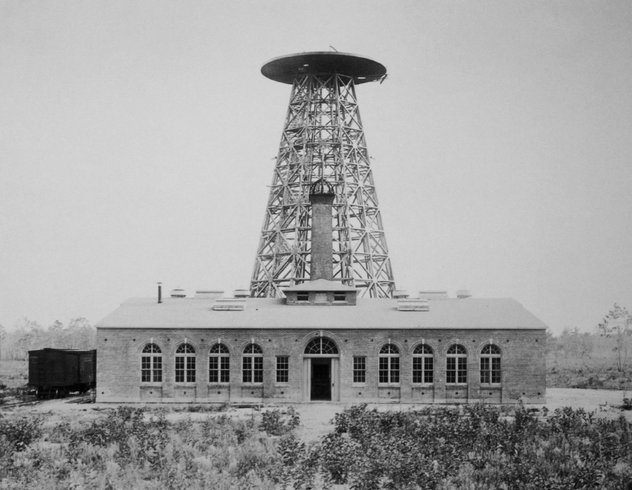Corey Weiner is the founder of c2a.studio, an on-site as-built laser scanning service for architects, interior designers, builders, and engineers. As one of the first reality capture professionals to test the new Leica BLK360, he sat down with us to answer a few questions about his first impressions, performance improvements, and what it means for his AEC-heavy business.
Let's start with the basics. We know the tech specs, but what are your first impressions of the new BLK360 in the field?
My first impression is all about speed. That's the number one thing – cutting down what was a two-minute and fifteen-second scan to now a 37-second scan; – literally, that seems to be the comparison.
And before, I never did scanning with HDR imagery because I didn't want to spend four or five minutes per scan. But now, I can do not only an HDR photo but a high-density combination [of photos and scan] and it takes a minute and 37 seconds. So even with higher settings, I'm still saving over a minute compared to medium settings on the last one [the BLK360 G1].
I can't even get out of the way in time! I used to have at least 10 seconds to move. I was in most of my first few scans – and then I had to learn to get out of them. So, without a doubt, gaining speed and saving time is the biggest story ever with this device.
Another time-saver on this device is our Visual Inertial System (VIS), which we brought over from the Leica RTC360. Did you get a chance to test that?
I couldn't test that, but I have used it with the RTC360. Wow. What a beautiful thing. One time I did an industrial plant that was 200,000 square feet. With VIS, I could go from scan to scan, and I don't have to click two or three buttons to register the last scan in FIELD 360. That means the scanner just knew where I was and threw the scan into place. On a 200 or 300 scan job, it saves me a lot of time, and I really know where I am within my data.
Editor's note: VIS is now available using Cyclone FIELD 360 in the new BLK360.
Talk about your experiences on site. What and where did you scan?
I did two spaces so far. The first space was a building built in 1934 in Miami Beach that used to be the lifeguard headquarters for all of Miami Beach. It's a cool, nautical-looking structure – like something you'd see on SpongeBob – with these round portals, it looks like a little ship.
There were two challenges. It was a small one-and-a-half-story building, but it's surrounded by beach access for the public, and on either end of the building are public restrooms. So as I'm scanning, people are coming in and out all day long, cars are going by the side, and it's beach access for utility trucks—a ton of activity.
For a job like this with my G1, I'm kind of nervous. I set it up and then I run behind a corner and hit "go" and then it's two minutes and 50 seconds worth of panic for me. Is someone going to walk into the tripod? Is someone going to stand next to it and gawk at the camera? Is a truck going to hit it?
With this, I put it down for 37 seconds, and the scan was over so quickly that no one walked by. I did that 15 times to capture the whole space.
I think sometimes it's easy for people to forget because you see the output of a polished scan and it's been edited and combined and there are no people in it ever – there are a lot of people in the real world. These buildings aren't empty most of the time.
Right. There's a practical benefit because I have clients like, "This isn't going to take more than a half-hour, is it?" and I'm like, "They didn't tell you we were going to spend five hours in here?"
For instance, I have to scan a retail store. It's in a mall. The store manager might not want me there. I'm sent in by the architect, who's been hired by the parent company, et cetera – it's a lot for the people working there. I'll have a much easier time getting in and out in 30 minutes than I would be taking up space in a small retail store for an hour.
What was your other scan with this unit?
The other place was a residential loft in the Miami Design District. It's 400 square feet, tiny loft, high ceilings, super cool design. I think about 10 scans total.
I'm just looking at the files now, and it's the same as I noticed on the Miami Beach building. My accuracies are like a millimeter to a millimeter and a half, almost out of the box. And with my BLK360 G1 I'm used to still great accuracy – two, three, or four millimeters – and I'll cut out some hedges and narrow that down to maybe 2.5-millimeter accuracy. This thing? Every single scan is coming out to be 1.1 mm or 1.5. The accuracy level is absolutely higher.

That's great to hear. I know accuracy improvements are something our engineers worked hard for.
The other thing is I'm used to cutting out proximity distortion, usually 1000mm in front of the scanner, where windows and doorways start to curve. If I was within four or five feet, I noticed.
Now, I'm still cutting out about a 500-millimeter sphere because I feel like I have to, just because it's really close, but at 501 mm away, I'm not noticing any distortion. I haven't looked so deeply, but it's nowhere near the distortion the BLK360 G1 had. So that's another benefit with this data.
You were a photographer before you got into laser scanning. How are the photos on the new unit?
The G1, I would characterize those photos as barely usable for documentary images. On this, not even on the HDR (high dynamic range) settings – just on the basic photo settings – I would say it's a massive improvement over the G1. For the Miami Beach building, I did not do HDR. I did LDR, and those photos were great.
Final thoughts?
Buying the new BLK360 is a no-brainer for me. Thank you for trusting me [with the test unit]. I'm flattered and happy, and I appreciate the opportunity.



